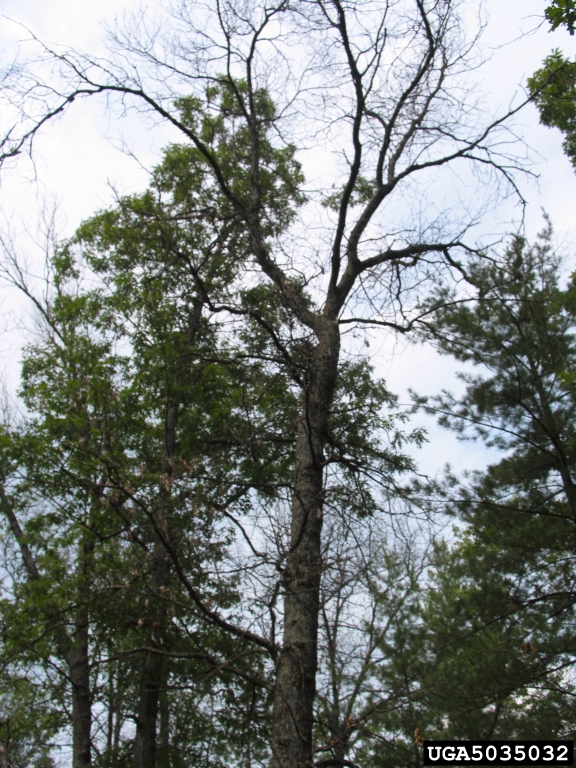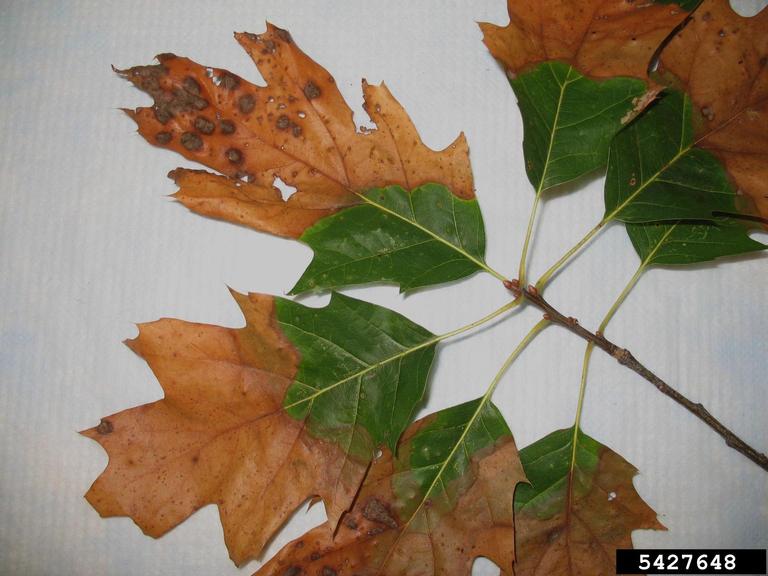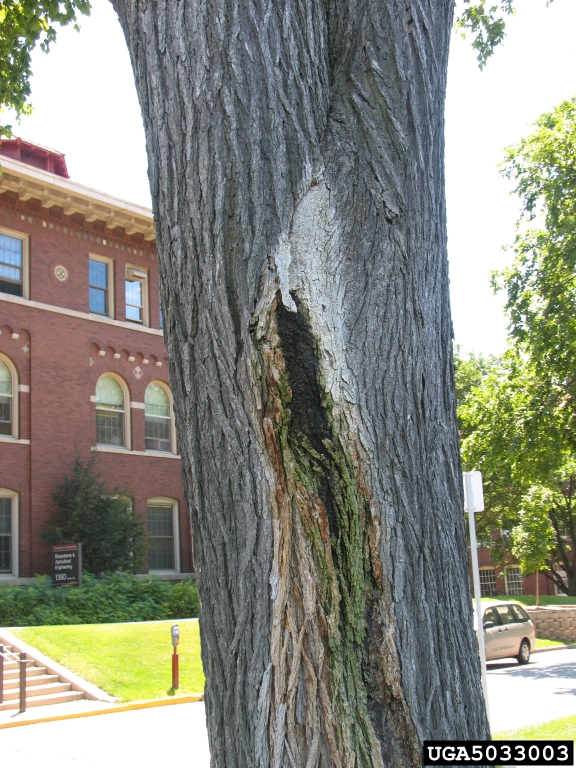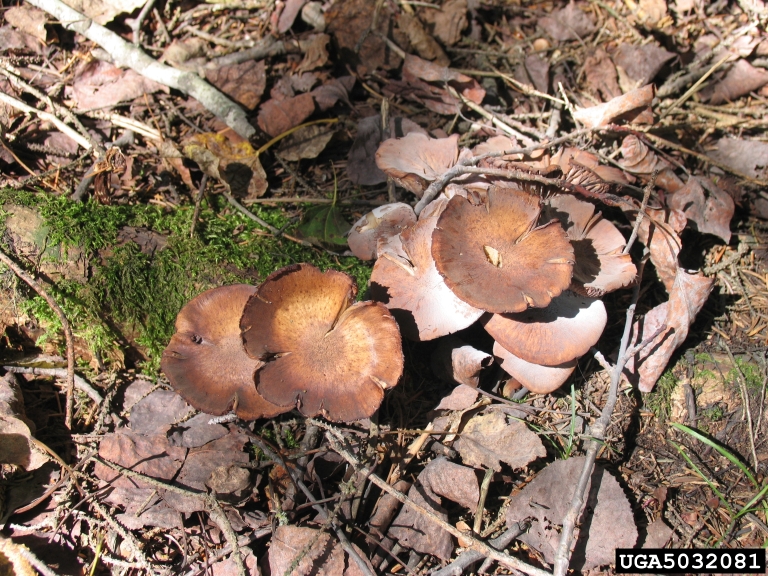Key Takeaways
- Prevention is More Effective Than Treatment
Many serious oak diseases, like oak wilt and root rot, have no cure once established. Prevention through proper maintenance, including appropriate pruning practices, good drainage, and regular bio-stimulant applications, is crucial for protecting oak trees. - Not All Symptoms Signal Serious Problems
While some diseases like oak wilt can be fatal, many common issues (such as leaf spots, anthracnose, and powdery mildew) are primarily cosmetic and don’t seriously threaten mature, healthy oaks. Professional diagnosis helps distinguish between minor and major concerns. - Tree Health Influences Disease Resistance
Healthy, well-maintained oak trees are naturally more resistant to diseases. Regular maintenance, proper watering practices, and professional monitoring help trees develop stronger immune systems to fight off potential infections.
Oak trees make up a significant portion of our forest cover and are wonderful additions to residential landscapes, but they subject to diseases just like any other living organism. When your oak tree becomes sick, it can negatively impact the beauty of your garden, pose safety risks, and reduce the value of your property. Therefore, early identification and treatment of oak tree diseases are critical in ensuring their optimal health. In this article, we’ll discuss some common oak tree diseases, how to identify them, and the steps to treat them.
#1. Oak Wilt Disease

Photo credit: Joseph OBrien, USDA Forest Service, Bugwood.org
Oak wilt disease is a fungal disease that causes the tree to wilt and die. It spreads from tree to tree through an insect vector or through the root system and can cause rapid decline. Early symptoms of this disease include wilting of leaves, color changes out of season, and untimely leaf drop. Red oaks are more vulnerable to this disease than white oaks. There is currently no cure for oak wilt disease, which makes prevention the best strategy. Proper pruning practices are a great way to prevent oak wilt disease, which often enters through wounds in the tree. Applying bio-stimulants twice a year can also keep your oak trees healthy.
#2. Bacterial Leaf Scorch (BLS)

Photo credit: Nancy Gregory, University of Delaware, Bugwood.org
This bacterial disease primarily affects pin oaks and red oaks and presents with scorched leaf margins. The disease quickly progresses to the leaf’s interior, causing yellowing, browning, and premature defoliation. Older trees with weaker immune systems are more susceptible to bacterial leaf scorch. As with many other diseases, prevention is the best strategy, but some suppression methods are available. Again, healthy trees are less likely to succumb to this disease, so regular maintenance is a good idea.

Photo credit: Joseph OBrien, USDA Forest Service, Bugwood.org
#3) Slime flux
While we’re on the topic of bacterial problems, slime flux (also known as bacterial wetwood) is another bacterial infection that results from physical damage to the tree. It causes watery and smelly leaks from the trunk, which attract pests like flies and mosquitoes. There is no cure for slime flux, but it can be prevented through proper pruning techniques to avoid wounding the tree. As always, applying bio-stimulants twice a year can help keep trees healthy and able to withstand stress.
#4) Root rot

Photo credit: Joseph OBrien, USDA Forest Service, Bugwood.org
Root rot is a general term for a group of fungal diseases that affect a variety of tree species. On oak trees in our area, we commonly see Armillaria root rot and Ganoderma root rot, although there are many other species of root rotting fungi that affect all oak species. This problem is often caused by overwatering or the presence of stagnant water, which causes fungal growth and decay in the roots. As the roots rot, they cannot absorb water and nutrients, leading to stunted growth and ultimately the death of the tree. A common sign that your tree has root rot is mushrooms growing around the base of the tree. There is no cure for root rot and affected trees can become hazardous. Prevention is key; plant trees in well-drained soil and employ appropriate watering practices. If your tree is infected with root rot and nearby a structure or high-traffic area, removal is recommended to avoid property damage or injury.
All of the above diseases probably sound dire, so here’s some good news for you. Healthy. mature oak trees in residential landscapes are generally pretty resilient, so a lot of the calls we get about spots on oak leaves or oak trees looking poorly end up being benign or treatable. Some common diseases that only cause minor damage to trees and don’t usually warrant treatment include anthracnose, oak leaf blister, leaf spot, and powdery mildew. These diseases cause white spots or brown spots on oak leaves but usually don’t cause serious health problems on healthy, mature oaks.
One more question we get a lot is about a disease called Sudden Oak Death (SOD). Many of our clients have read articles about this disease and call us, concerned about their oak trees. This disease has gotten a lot of attention because of its devastating impact on millions of trees in the US and its alarming name. However, USDA APHIS keeps track of the spread of this disease, which is mostly contained in the western United States and Canada at this point.
Diseases in oak trees can affect your garden’s beauty, cause safety concerns, and reduce the value of your property significantly. Identifying and treating these common oak tree diseases will help you maintain your trees’ health and vitality. Regular tree maintenance and inspections by a professional can spot problems before they become worse. One of the best ways to prevent problems is to have an expert monitor your property regularly for issues. Our arborists and environmental specialists are trained to look for warning signs and can recommend an appropriate course of action. If you are monitoring your landscape on your own and notice any concerning symptoms on your oak tree, it’s best to contact a Certified Arborist for identification, diagnosis, and treatment.


